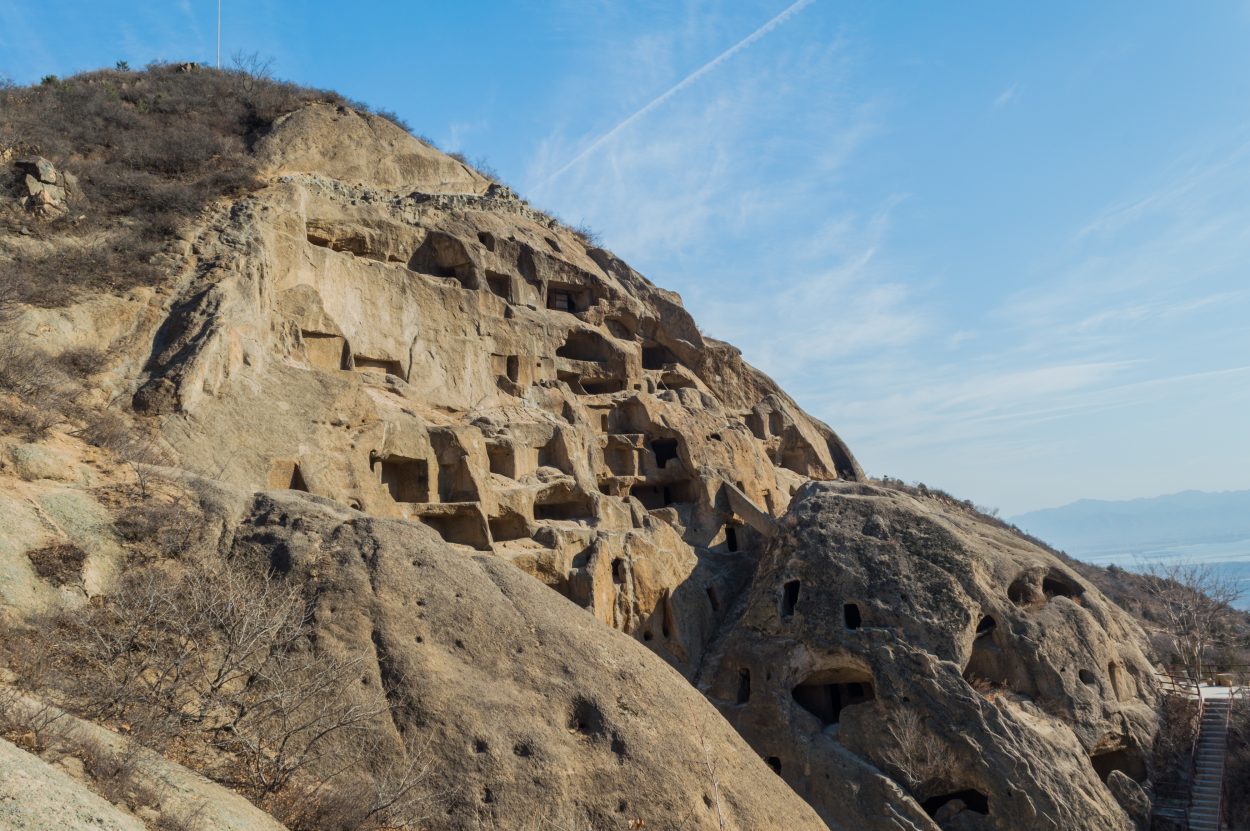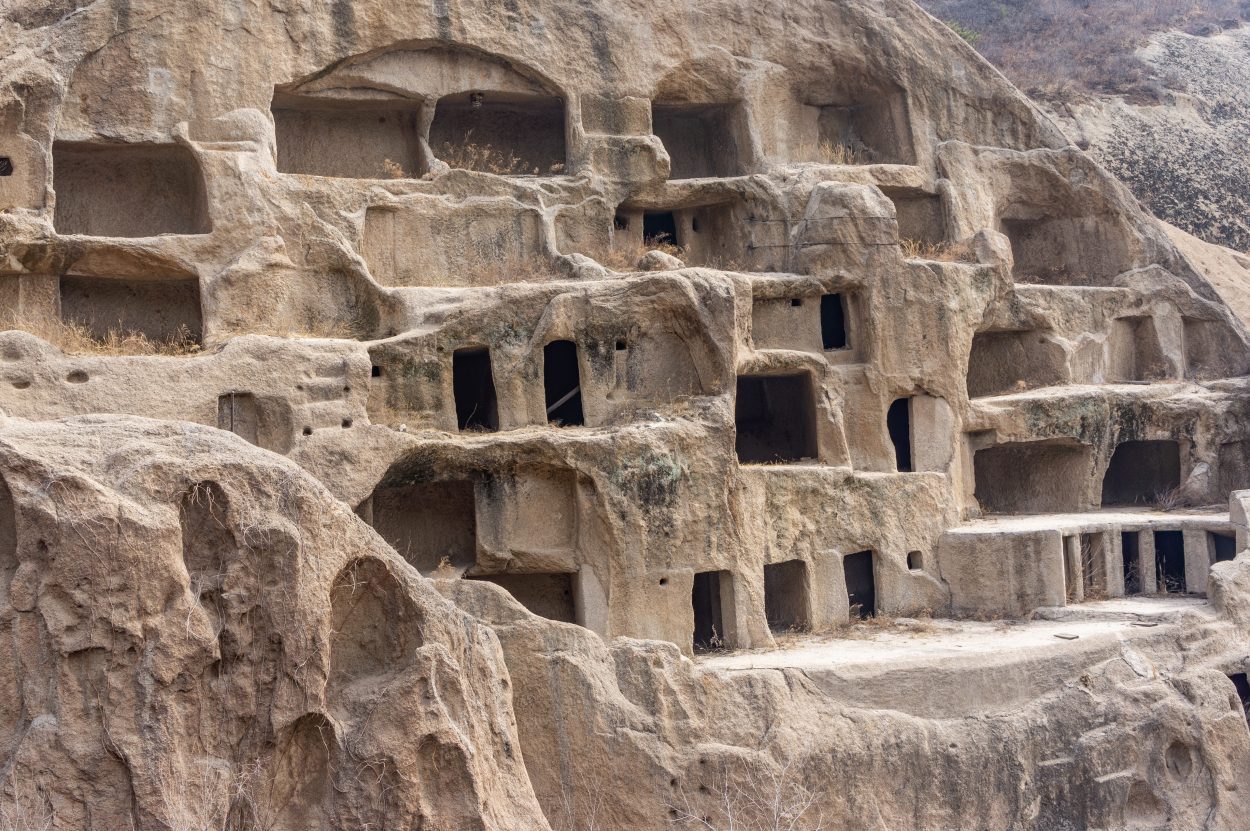The Guyaju Caves, also known as the Yanqing Ancient Cliff House, is a rock-cut complex of honeycomb caves carved into the slopes of the Tianhuang Mountain in the Yanging District of China.
The site was first discovered in 1984 near the village of Dongmenying during a survey conducted by the Yanqing County Cultural Relics Management Office. Since then, Guyaju has been registered with the national key cultural relics protection unit, the highest protection level approved by the State Council of the People’s Republic of China for immovable cultural relics.
Guyaju is situated in the northern margin of the Yanqing-Fanshan Basin, a geological region comprising of 110-million-year-old granite that formed when magma intruded upwards through large amounts of diabase rock.
The cave builders took advantage of exposed granite features to construct a complex network of 350 chambers cut into the rock face across a system of 117 caves. The chambers are mainly 1.8 metres in height and laid out in a rectangular or square plan that vary from single room dwellings to larger multi-room homesteads over multiple levels.

Many dwellings contain rock-cut furnishings: from a bed, lamp stands, storage compartments, stone tables, a stove and flue, and a kang – a simple domestic heating system commonly found across China. Chambers were interlinked with a network of vertical and horizontal passages, connecting the upper residential areas to the lower levels used to hold livestock and for stabling horses.
The largest and most complicated complex at Guyaju is called the “Guantangzi” meaning “Golden Temple”, a collection of 8 chambers divided over two floors. At the entrance is two ornately carved pillars that leads into a chamber used for communal gatherings or religious ceremonies.

The origins of who constructed Guyaju is somewhat of a mystery. Archaeologists have been unable to recover any surviving organic materials for reliable dating, nor are there any frescos or carvings in the cave system.
Some scholars suggest that the site was founded by the Kumo Xi, also called the Tatabi, a Mongolic steppe people that existed more than 1,000 years ago. The Kumo Xi engaged in several conflicts with Chinese dynasties and Khitan tribes, resulting in a series of disastrous defeats and the collapse of Kumo Xi territory to the Khitan-led Liao dynasty of China.
Other theories suggest that the complex was a granary built in the Tang Dynasty (AD 618 to 907) or that it served as a garrison for soldiers during the Han Dynasty (202 BC – AD 220).
Header Image Credit : Shutterstock





